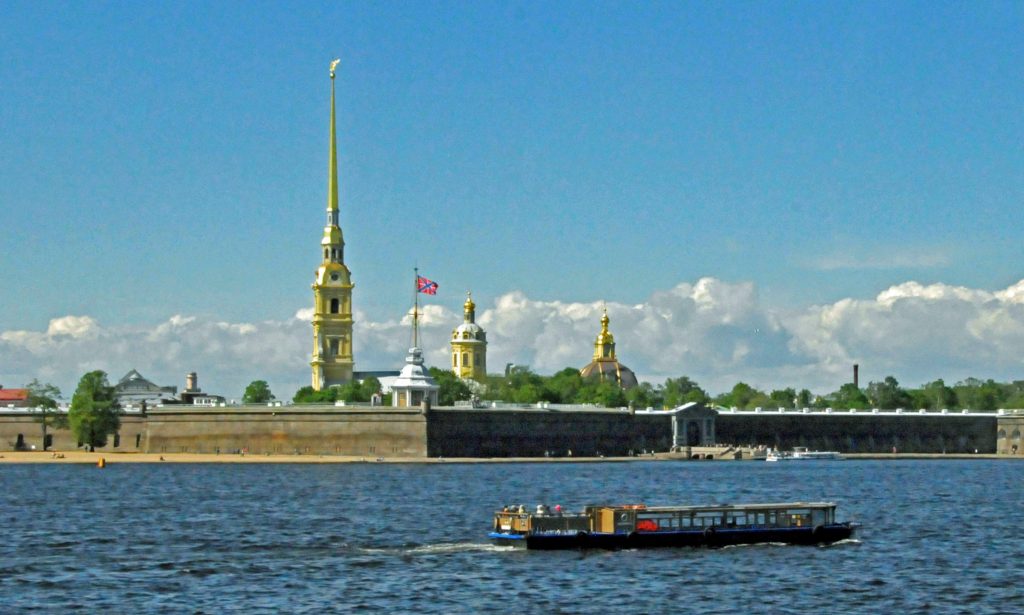
The Peter and Paul Cathedral is St. Petersburg’s most visible landmark. It is also the final resting place of Russia’s most famous rulers.
In 1703, Tsar Peter I established St. Petersburg on land captured from Sweden. To protect his new city from an expected counterattack, Peter established a stone fortress on an island in the Neva River that leads to the Baltic Sea. He named the fortress for Saints Peter and Paul. In 1712, the same year Peter made St. Petersburg his capital, he began building a church in the center of the fortress. Having seen the great Protestant churches of Western Europe, with bell towers and soaring spires, he built the church in that style rather than in the style of other Orthodox churches of the time, most featuring domes. Peter ordered the massive bell tower completed first so that it could settle in the marshy soil before adding the remainder of the church. When the church was completed in 1733, its 404-foot-tall tower, topped by a golden angel carrying a cross, made the Peter and Paul Cathedral the world’s tallest Orthodox church, a title it retained until 2010.
All but two of Russia’s imperial rulers, starting with Peter I, and some of their family members are entombed in sarcophagi inside the cathedral, which is now a museum. The body of Nicholas II, executed in 1918 during the Russian Revolution, was reinterred in the cathedral in 1998. All but two of the 41 tombs are made of white marble. The tombs of Alexander II and his wife were carved from solid blocks of semi-precious stones, each weighing more than five tons. Because of lack of space in the cathedral, more recent dukes and duchesses are interred in the domed Grand Ducal Mausoleum, built near the cathedral at the end of the nineteenth century.
Comments are closed.